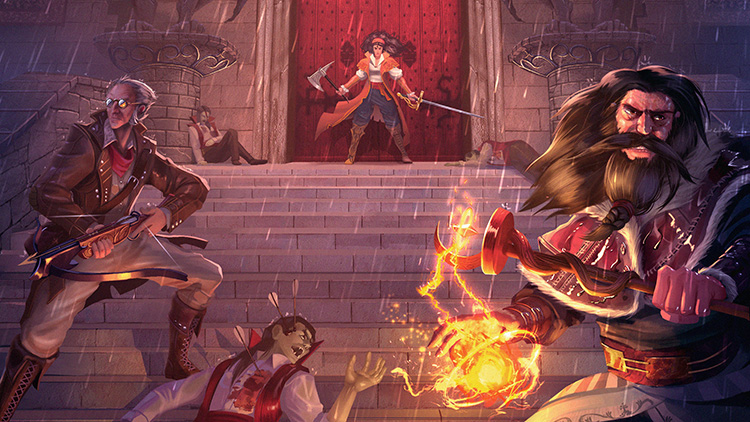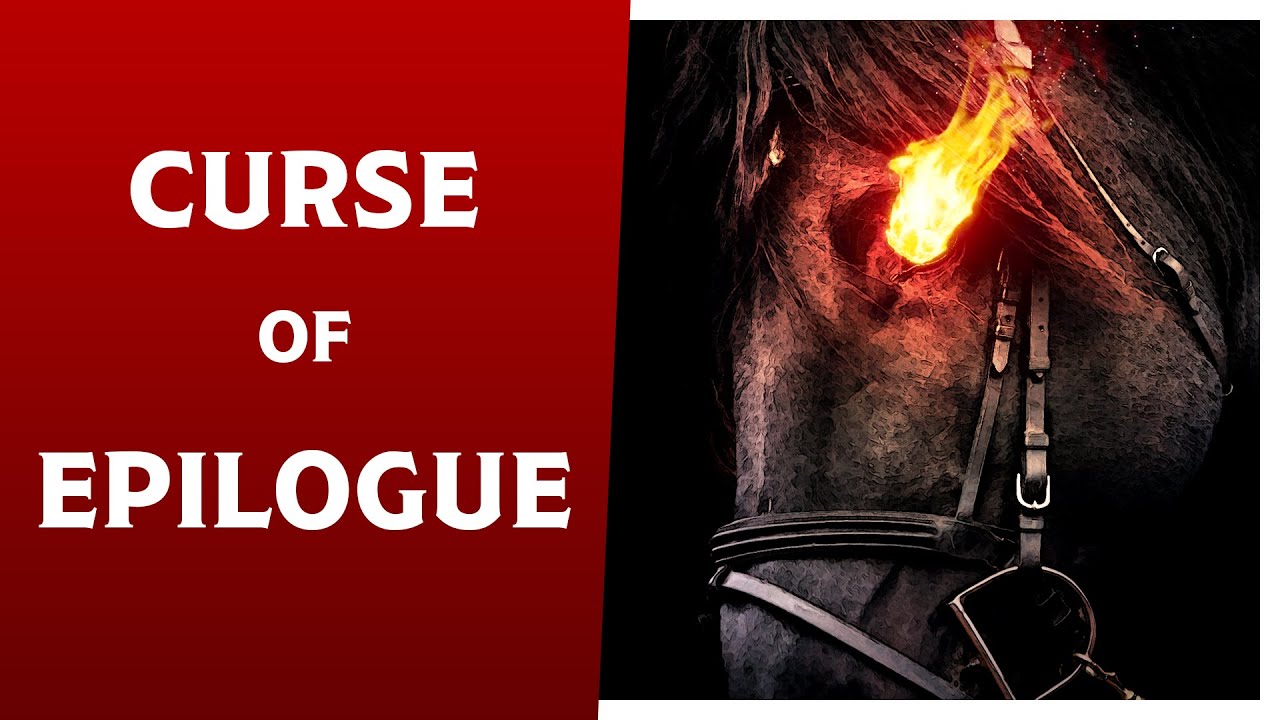Curse of Strahd, Dungeons & Dragons, Ravenloft
End Curse of Strahd the right way
Strahd is dead. The brides are dead. Rahadin is dead. Vampyr is locked away in his prison. Everything ends, and all that’s left is to put an end cap on the whole adventure.
So how do you do it right, and make it a memorable experience for your players? Let’s wrap it all up with an epilogue!
Why run an epilogue?
In books, an epilogue steps back from the main plot and focuses on small details in the wake of what happened during the story. This often involves looking at the lives of individual characters, and how they’ve been affected. Likewise, in your Curse of Strahd game, an epilogue lets you and your players examine how their adventure and actions within Barovia have affected not only the land and its inhabitants, but their own characters as well.
An epilogue provides a unique low-stakes opportunitye to explore into the near future. Generally, no dice are thrown, no hit points are required, and the rules are set aside for the sake of narrative freedom. You and your players both get a chance to tie up loose ends and engage in freeform narrative and world building.
When to run an epilogue
You may run an epilogue whenever your campaign has come to an end, regardless of how it came to an end. Perhaps Strahd has triumphed against your party, or perhaps he is naught but dust within his coffin. Either way, the journey that you have undergone deserves a fitting end.
The epilogue itself is usually conducted in one of two ways. Either during the final session of the game as an improvisation, or during its own individual session. In the latter case, your players are to write their epilogues individually, and send them to you. At that point, you may read them over and work them in to the epilogue for the overall world and its NPCs. Feel free to pass ideas back and forth at this stage to make everything fit together and feel right, just like you may have done with character backstories at the start of your campaign.

Get The Essential Guide To
Curse of Strahd
Years in the making, this guide to Curse of Strahd has enhanced thousands of games across the globe. It’s now yours in one convenient downloadable package.
Ending Type
As the Dungeon Master, it’s your job to figure out what has happened to the land of Barovia in the wake of the party’s actions. The specifics of what happens depends largely on the actions of the party over the course of the campaign. In order to simplify things, try to figure out what kind of ending the party has earned: good, bad, or neutral.
Good Ending
Here are some general ideas of what might constitute a “good ending” in Curse of Strahd.
- Strahd has been defeated.
- Barovia has returned to the material plane, or its inhabitants are allowed to escape through the mists.
- Ireena/Tatyana has been reunited with Sergei.
- The beacon has been lit at Argynvostholt.
- The werewolves are no longer stealing children.
- The winery has returned to full operation.
- Old Bonegrinder will never be used to grind the bones of children again.
- Vallaki’s political situation has been stabilized.
Bad Ending
On the other hand, the following situations may signify a bad ending:
- Strahd has defeated the characters.
- Barovia remains locked away in the mists.
- A new dark lord has rising to power—especially if it is one of the player characters.
- The characters have succumbed to the dark gifts of the Amber Temple.
- One or more towns/villages lie in ruin.
- The werewolves are still kidnapping children.
- The hags of Old Bonegrinder have expanded their operations.
Neutral Ending
A neutral ending combines a mixture of good outcomes and bad outcomes. Perhaps the characters are able to escape Barovia and return home, but the land they leave behind is overall worse for them having been there. Or maybe Barovia has been freed, but at the expense of the souls or freedom of the characters themselves.
Tie the world together
Once you have an idea of the “type” of ending the players have earned, begin putting it all together and see what happens to Barovia and its inhabitants. Look at each of the places they’ve visited, and the (surviving) NPCs that they’ve interacted with on a meaningful level. If a bad ending has been achieved, the outcomes for those places and people may be bleak. If a good ending has been achieved, then the outcomes will be much more positive.
For example, if the party has encountered Ezmerelda D’Avenier and Rudolph van Richten, the two might reconcile in the case of a “good ending”. Otherwise, they may never meet or decide to go their separate ways again. In extreme cases of a “bad ending”, perhaps Ezmerelda decides not to forgive Rudolph for the murder of her family, and seeks revenge on her old mentor.
For another example, let’s look at Argynvostholt. If the beacon has been lit, perhaps a character or an NPC takes up the mantle of the knights and reforms the order. On the other hand, if the beacon remains dark, perhaps the mansion finally crumbles to dust. In a particularly “bad ending”, a new dark lord might seek to use the remaining knights to their own ends.
Work in the player characters
With an idea firmly in mind of what type of ending has been earned, and what has happened to key locations and NPCs, it’s time to work in the player characters themselves.
If the epilogue is being held during the final session, work with each player to improvise the resolution of their character’s arc within Barovia. If Strahd defeated them, maybe they now stalk the halls of Ravenloft as mindless vampire spawn, or perhaps as a privileged consort.
On the other hand, if everyone has written out their epilogue for a separate session, take turns going around the table and reading aloud. This process likely won’t take long, so plan to fill the time in some other fashion. Converse, perhaps, about the highlights of the campaign. Allow everyone to discuss what their favorite moments were, or what moments were most intense or scary. The epilogue is the perfect time for reflection.

